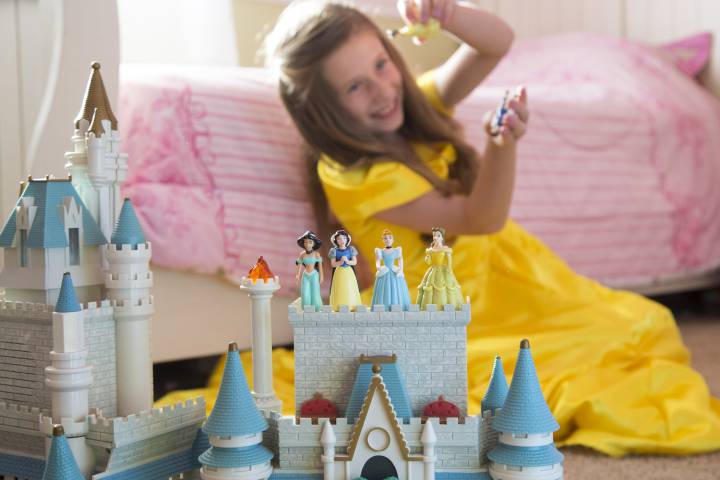
She’s wearing a tight blue dress, long hair swept back in a braid and she’s singing about her new-found independence. Elsa, from Disney’s wildly popular film Frozen, has become a ubiquitous fixture to kids around the world and new research suggests the franchise’s princess culture is shaping a generation of little girls – and little boys, too.
Scientists out of Brigham Young University in Utah are warning that Disney princesses could “influence preschoolers to be more susceptible to potentially damaging stereotypes.” While Elsa may be crooning about loving herself, including her flaws, little girls are zeroing in on her tiny waist and soft-spoken voice.
Little boys, on the other hand, ended up with better feelings about their bodies and were, generally, more helpful to others the more they interacted with Disney princesses through movies and toys.
READ MORE: Want your daughter to break barriers? Dads should do chores, study suggests
“I think parents think that the Disney Princess culture is safe. That’s the word I hear time and time again – it’s ‘safe.’ But if we’re fully jumping in here and really embracing it, parents should really consider the long-term impact of the princess culture,” Dr. Sarah M. Coyne, a family life professor at BYU, said in a university statement.
“We know that girls who strongly adhere to female gender stereotypes feel like they can’t do some things. They’re not as confident that they can do some things. They’re not as confident that they can do well in math and science. They don’t like getting dirty, so they’re less likely to try and experiment with things,” Coyne said.
For her study, Coyne worked with 198 preschoolers, looking at how often they were exposed to Disney princesses in movies or games and toys.
Parents and teachers were interviewed while the kids completed tasks, such as ranking their favourite toys from a collection of “girl” toys, “boy” toys, and gender-neutral toys. This is how the researchers measured “gender-stereotypical” behaviours.
READ MORE: What makes a voice attractive? Familiarity plays a key role, study suggests
Turns out, 96 per cent of the girls and 87 per cent of the boys watched Disney princesses. A whopping 61 per cent of the girls played with their Disney princess toys at least once a week.
Across the board, for both boys and girls, the more they interacted with the princesses, the more likely “female gender-stereotypical behaviours” would crop up.
Boys had softer tendencies, they had confidence in their bodies and shared with others.
The girls worried about their appearance, though.
“Disney princesses represent some of the first examples of exposure to the thin ideal. As women, we get it our whole lives and it really does start at the Disney princess level, at age three or four,” Coyne warned.
She said her research changed the way she talks to her daughter. After watching Brave, the pair talked about how strong Princess Merida was.
“It’s frustrating when the dentist sees my daughter and says, ‘Look at the little princess!’ because she’s so much more than that,” Coyne said.
READ MORE: Concerned about your child’s weight? Here’s some food for thought
Parents don’t need to pull away from Disney princesses altogether, Coyne said. Make them part of a well-rounded group of interests and hobbies instead. Talk to your kids about the media they’re watching, too.
Read the full findings published in the journal Child Development.
carmen.chai@globalnews.ca